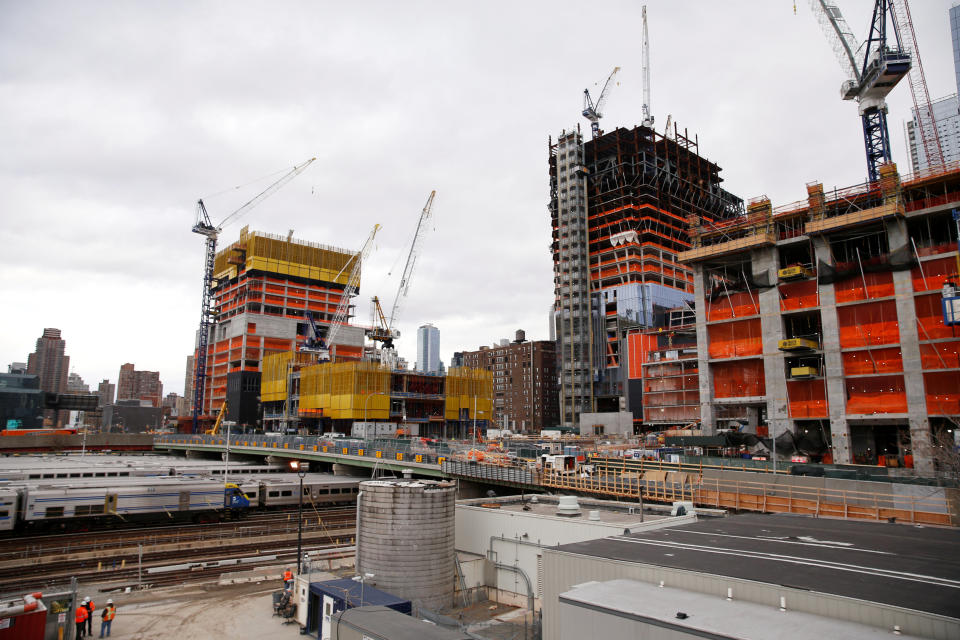All of the surveys have confirmed one thing since Trump's election

Everywhere you look in the US economy right now, sentiment is up.
In recent weeks, consumer sentiment has surged to highs not seen since before the financial crisis. And business sentiment has followed suit.
The latest entries into the field were manufacturing surveys out Thursday — from the Philly Fed, the New York Fed, and data provider Markit Economics — all showing an increase in optimism among business on the manufacturing side of the economy.
Markit’s preliminary reading of US manufacturing activity in December hit a 21-month high in a report out Thursday. Of note, the report showed the strongest rise in pre-production inventories since the survey began in 2007, indicating US manufacturers are anticipating a big surge in orders next year.
“US manufacturing is enjoying a strong end to 2016, showing further signs of pulling out of the soft-patch seen earlier in the year and putting the sector on the starting blocks ready for a further upturn as we move into 2017,” Markit’s chief business economist Chris Williamson said.
“The fourth quarter has seen the strongest PMI readings for one-and-a-half years, suggesting the goods-producing sector is growing at an annualised rate of 2-2.5%.”
Elsewhere on Thursday, regional manufacturing surveys from the Philadelphia Fed and New York Fed showed major improvements.

The Philly Fed’s manufacturing index jumped to 21.5 in December from a reading of 7.6 in November, and nearly 34% of firms responding to the survey indicated an increase in business this month.
The New York Fed’s Empire State manufacturing index rose to 9.0 from a reading of 1.5. And inside the report, the index’s reading for future business conditions jumped to its highest level in five years.
“The steady drumbeat of stronger than expected activity data continues,” said Neil Dutta, an economist at Renaissance Macro. “Importantly, capital spending intentions in both [the Philly and New York Fed] surveys surged. In a few months, it will be difficult to describe business fixed investment as ‘soft.'”
In its monetary policy statement issued Wednesday, the Federal Reserve said, “Household spending has been rising moderately but business fixed investment has remained soft.” In raising its benchmark interest rate for the second time since the financial crisis on Wednesday, the Fed also released a new set of projections that expect three, not two, additional rate hikes next year. Firming business investment could put even more upward pressure on the Fed’s forecast.
Manufacturing, however, isn’t the only place where we’ve seen a surge in sentiment.
On Thursday, the latest homebuilder confidence reading from the National Association of Homebuilders rose to its highest level since 2005. And this comes despite a rise in mortgage rates for seven straight weeks, with the average 30-year fixed mortgage now back above 4%. An increase in mortgage rates is seen as a negative development for the housing market.
Earlier this week, small business optimism jumped to its second-highest level since the financial crisis. And in recent weeks, consumer surveys have shown a major uptick since the election.
After this initial upsurge in optimism, 2017 will likely require a quick delivery from Trump’s economic plans — which include the specific aim of cutting corporate taxes and the more amorphous aim of reducing regulation — which have powered higher both these sentiment surveys and the most obvious confidence barometer in financial markets, stock prices.
Stocks in the US are currently near record highs. The Dow is about 100 points away from 20,000. Bond yields, however, have risen sharply (bond prices fall when yields rise), and the US dollar has strengthened. A strong dollar could dent US corporate profitability and higher mortgage rates could hurt the housing market.
At this point, however, it seems businesses, consumers, and many market participants are shrugging off these concerns and counting on faster economic growth in the coming years to make up for these potential financial pressures.
—
Myles Udland is a writer at Yahoo Finance; follow him on Twitter @MylesUdland
Read more from Myles here:
